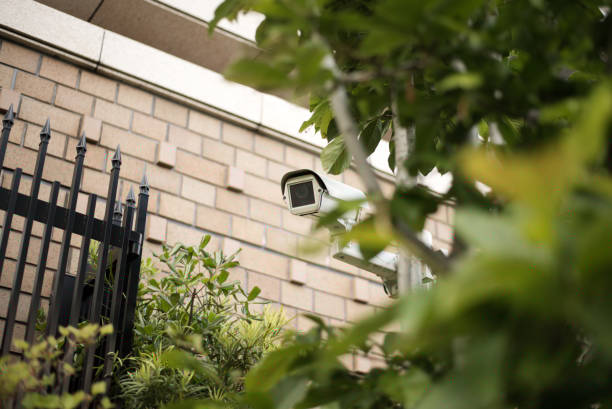Ten Tips To Install Hidden Security Cameras At Home

Security cameras can be a great component of a home's security plan. But security camera installation randomly can result in coverage dead zones , or result in video signal erosion and leave you vulnerable. By following this security camera placement guide You'll be confident that your camera will give maximum coverage to your property and for yourself.
1. You can select between wired and wireless cameras
If you're still looking for a home security camera system, you'll have to decide if you want wired or wireless security cameras. The choice you make will impact almost every aspect of camera placement.
Security cameras that are wired transmit the video feed using coaxial or Power Over Ethernet cables to a central hub. You can place cameras anywhere the cables can reach, though the cables need to pass through walls or in the ceiling.
2. Pay attention to Key areas
Intruders may gain access to any part of your home via the exterior. You'll have to narrow those entrance points to those that are the most likely for intruders to gain entry. NACHI an association of trade of home inspectors claims that 34% of all burglars are able to enter via the front doors. So, target your CCTV installation to monitor these areas, in the order of importance:
Front door
First-floor window
Back door
Garage
Backyard
Driveway
3. Perfectly positioned cameras for position cameras
Monitoring areas are not always identical to the locations of cameras.
In indoor settings, it makes sense to position the camera within the same space. Corners tend to work best because they provide the largest view of the room.
For monitoring outdoor locations it is possible that it's better to keep the camera indoors. Be sure to keep an eye on your driveway may mean locating the camera inside the kitchen's window. A bathroom window could be the ideal spot to view your backyard.
4. Find your Power Source
Every security camera requires power. Because they have onboard batteries, wire-free cameras offer the most flexibility in positioning. Security cameras that are wireless must be within six feet of a power outlet since each camera requires the power source of its own.
Wired security camera systems often are powered by the PoE cable. It is A single cable that integrates video, audio and power functions in one.
5. Signal Transmission
Alongside the power source decide the method by which the security camera will send feedback to the central hub. It could be a digital or networked video recorder, WiFi, or DVR.
Wireless security cameras send back a clear, dependable signal through open areas or through thin, less dense walls or floors. If the camera is required to transmit its signal through masonry walls or floors, the signal may not reach the hub.
6. Choose Ideal Height
High mounting positions are the best as they keep the CCTV Installation out of reach of intruders, curious children or inquisitive pets.
Outdoor installations should set the security camera at a height of 8-10 feet above the ground. Avoid placing it too high, such as at the top of gables because the camera is less capable of capturing small detail. Plus, cameras that are placed too high are more difficult to maintain and clean.
7. Install Camera Correctly
Security cameras install in many different ways. Freestanding cameras rest on window sills, on the tops of kitchen cabinets or on refrigerators. Although they are simple to put up, they're also easy for burglars to interfere with.
8. Make use of hidden security cameras
Security cameras in homes are popular nowadays. Are intruders likely to locate cameras and turn them off? Possibly. Many homeowners opt to put in hidden security cameras.
Some of these hidden cameras--call them spy cameras -- are no bigger than an ice cube and transmit video and audio feeds to your phone. Although they aren't as reliable as full-fledged security cameras, they can still be difficult to spot.
9. Take care when looking through Windows
One downside of shooting a security camera outside (while being indoors) is that infrared light technology washes out the picture when pointed through glass.
Experiment with different angles. You can also disable the night vision or IR feature. To avoid light reflecting on the glass, drape the security camera in towels.
10. Be Aware of Legalities
Never record or view spaces where one could reasonably be expected to have privacy. This usually refers to bathrooms and bedrooms. However, the legal definition of "expectation for privacy" is applicable to any area or part of the house.
MaxSol Techs
0455 66 55 80
info@maxsol.com.au
Cranbourne, 3977 Victoria